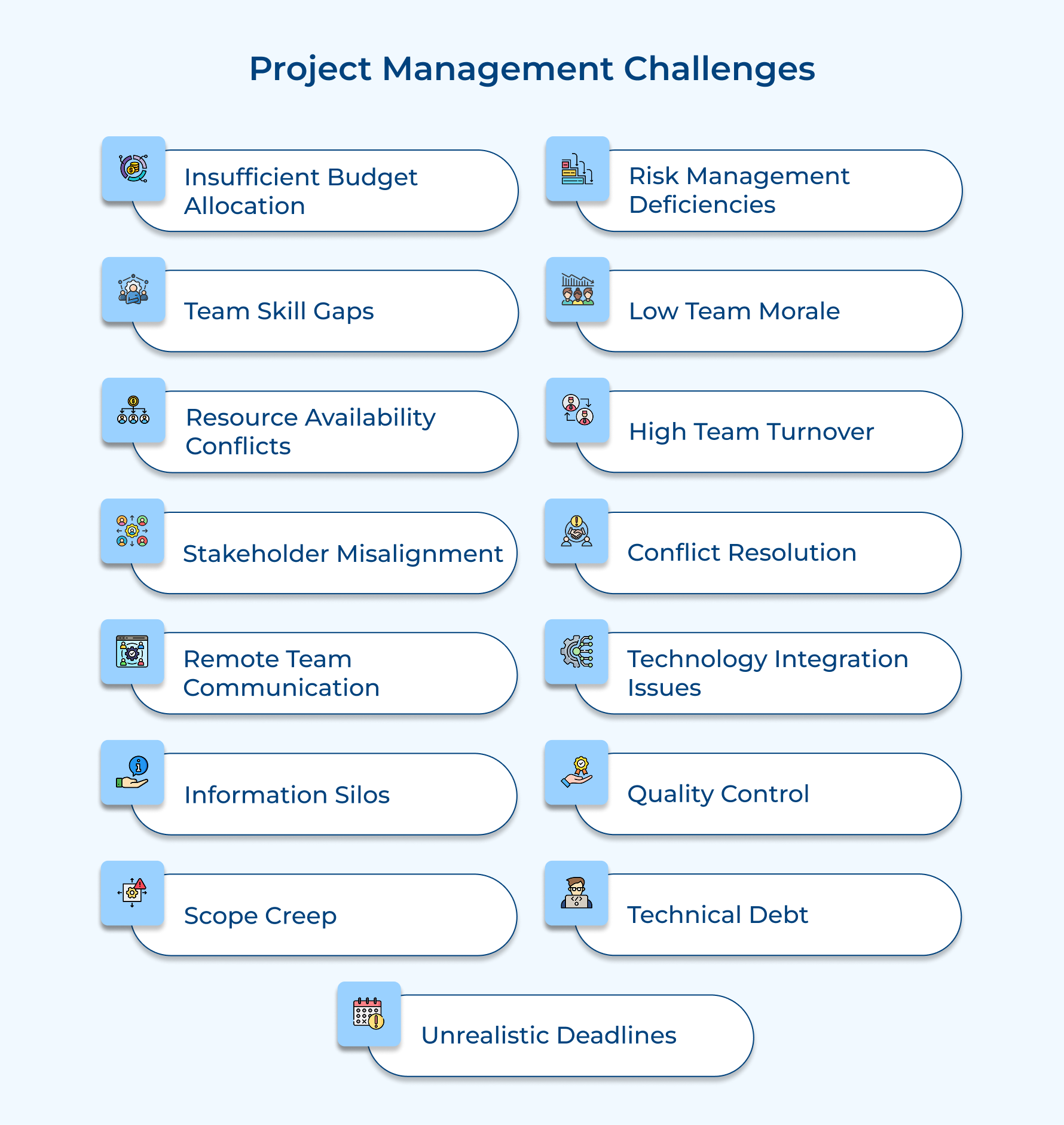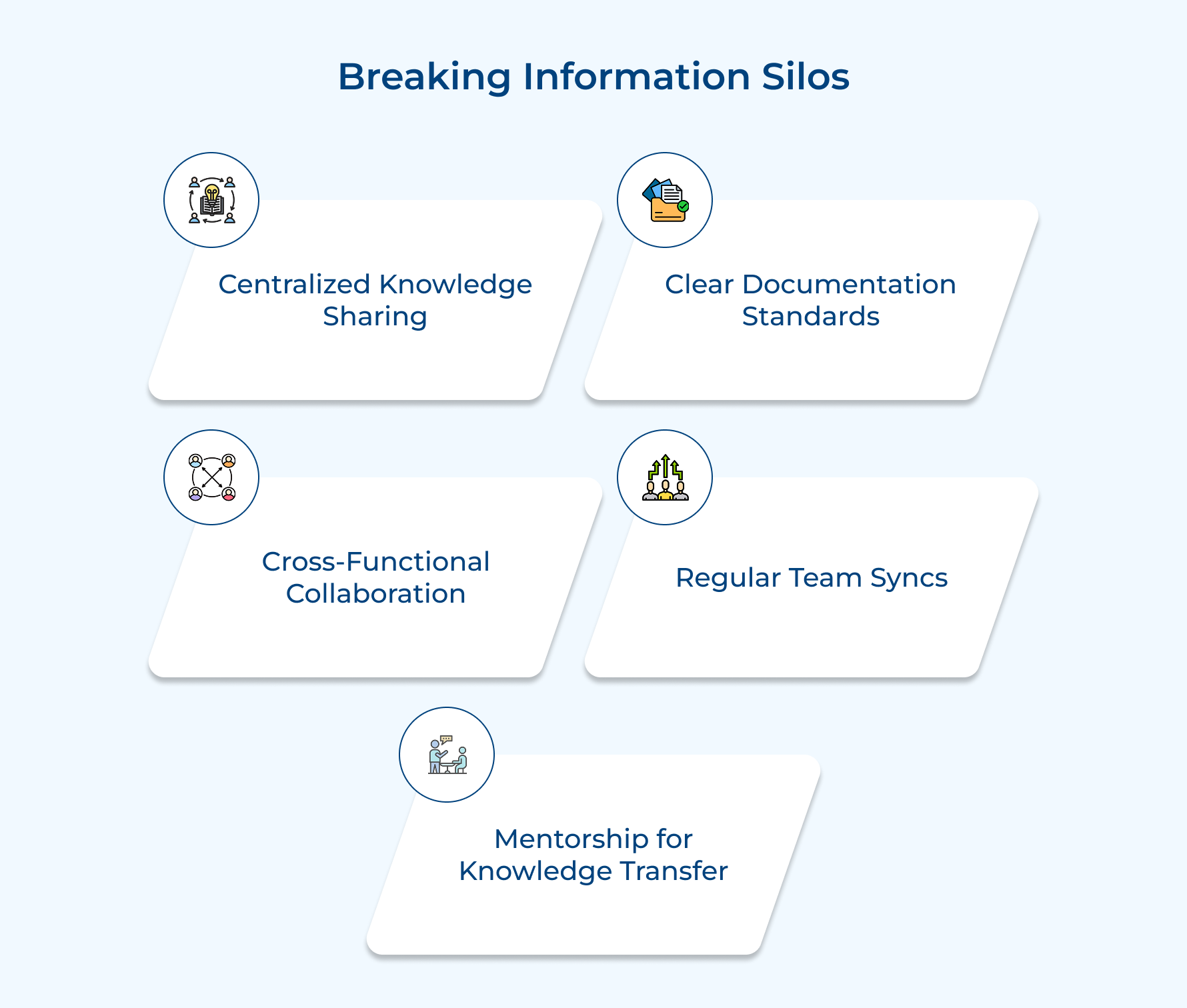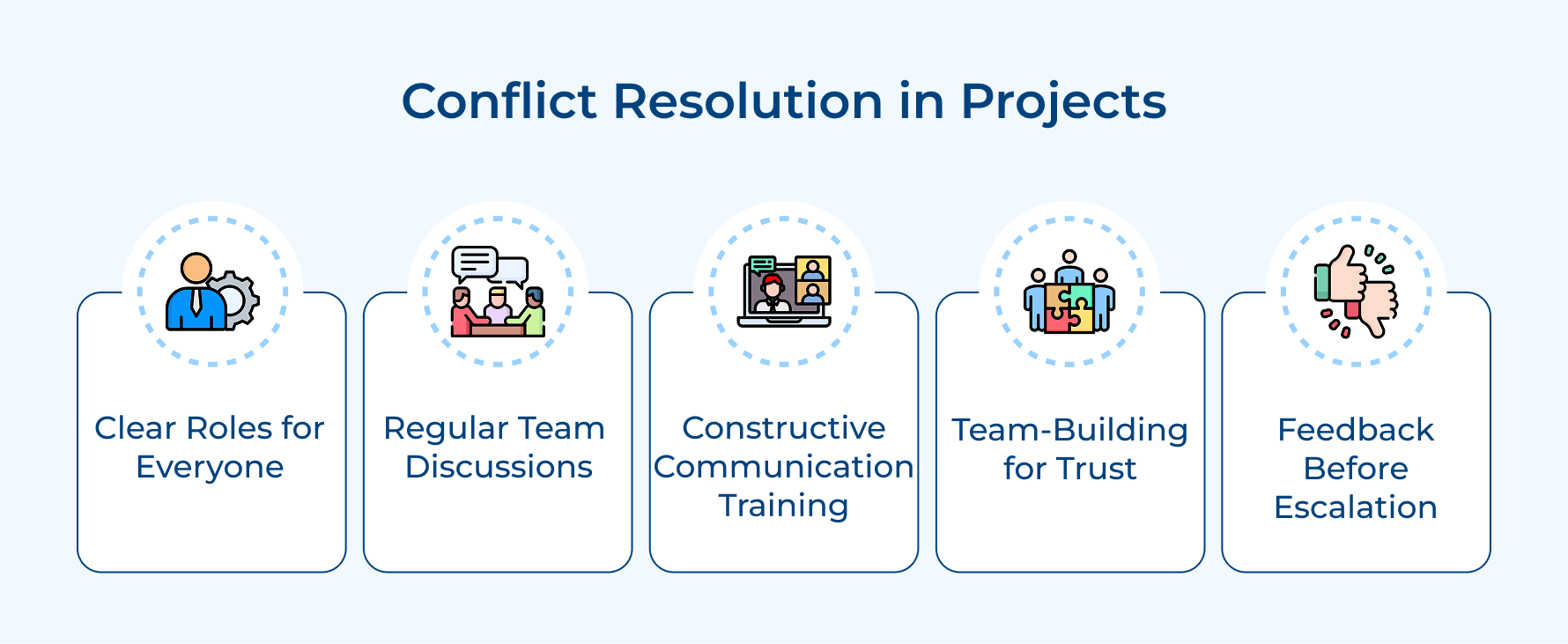15 Project Management Challenges & How to Deal with Them

Key Highlights:
- Project management challenges include budget constraints, unrealistic deadlines and scope creep, impacting quality as well as timelines.
- Clear roles along with structured frameworks enhance collaboration and decision-making.
- Risk management ensures smoother execution along with sustainability.
Ever wondered why even the most meticulously planned projects can go off track? Welcome to the dynamic world of project management, where challenges lurk around every corner. Whether you’re a seasoned project manager or just starting your journey, navigating these obstacles requires more than just technical expertise.
Over 70% of projects face significant hurdles, understanding these challenges while knowing how to address them can mean the difference between success and failure. Let’s dive into the most critical project management challenges and discover proven solutions.
15 Project Management Challenges and How to Deal with Them
Managing projects isn’t always smooth sailing, unexpected challenges can derail progress. Here’s how to tackle common issues and keep projects on track!
1. Insufficient Budget Allocation
Budget constraints arise from initial underestimation or unexpected cost escalations during project execution. This biggest challenge often stems from inadequate financial planning, market fluctuations, or scope changes that weren’t properly accounted for in the original budget estimation.
Key Impacts:
- Projects face delays or quality compromises as teams attempt to cut corners to meet financial constraints.
- Team morale suffers as resources become stretched, leading to increased stress and potential burnout.
Strategic Solutions:
- Implement a buffer-based budgeting approach, allocating 15-20% additional funds for contingencies and maintaining detailed tracking of all expenses.
- Establish regular financial health checks with stakeholders, reviewing burn rates and forecasting future expenses on a bi-weekly basis.
- Create a prioritized feature list that can be adjusted based on budget constraints, allowing for flexible scope management without compromising core deliverables.
2. Team Skill Gaps
Projects can hit roadblocks when team members lack the right technical or soft skills. The gap slows progress, affects project schedules, and risks the entire project. Regular meetings help identify skill gaps early, ensuring smoother execution and better outcomes.
Key Impacts:
- Delayed deliverables due to longer learning curves and reduced efficiency in task execution.
- Increased project costs from hiring external consultants or investing in rapid upskilling programs.
Strategic Solutions:
- Create a skills matrix mapping current capabilities against project requirements, then develop targeted training programs to address critical gaps.
- Implement a buddy system pairing experienced team members with those needing development in specific areas.
- Establish a knowledge management system to document best practices and lessons learned, making it easier for team members to access as well as learn from institutional knowledge.
3. Resource Availability Conflicts
When multiple projects compete for the same resources, bottlenecks and delays happen. This lack of resources overloads key team members in a matrix organization, making it tough to balance project tasks. Clear communication with project stakeholders helps prioritize work and keep progress steady.
Key Impacts:
- Project timelines extend beyond initial estimates due to resource-sharing and context-switching.
- Quality suffers as team members rush to juggle multiple commitments and priorities.
Strategic Solutions:
- Implement resource capacity planning tools and establish clear prioritization frameworks for allocating resources across projects.
- Create cross-training programs to develop backup resources for critical roles and reduce single-point dependencies.
- Hold regular resource planning meetings with all project managers to coordinate schedules and identify potential conflicts early.
4. Stakeholder Misalignment
Different stakeholders often maintain conflicting expectations and priorities regarding project outcomes. Misalignment can lead to confusion about project direction and create obstacles in decision-making processes.
Key Impacts:
- Project scope becomes unstable as different stakeholders push for their preferred directions.
- Team productivity decreases due to conflicting instructions and changing priorities.
Strategic Solutions:
- Create a stakeholder alignment matrix documenting each stakeholder’s priorities and establish regular alignment meetings to address conflicts.
- Develop a clear RACI matrix defining decision-making authority and communicate it to all stakeholders.
- Implement a formal change control process requiring stakeholder consensus for significant project modifications.
5. Remote Team Communication
Handling distributed teams across time zones isn’t easy—ineffective communication can slow progress. Communication breakdowns, cultural differences, and tech issues make teamwork harder. Strong communication skills help bridge gaps and keep everyone aligned.
Key Impacts:
- Delayed decision-making due to asynchronous communication and time zone differences.
- Increased risk of misunderstandings due to lack of face-to-face interaction and cultural nuances.
Strategic Solutions:
- Establish structured communication protocols with clear guidelines for synchronous and asynchronous communication.
- Implement collaboration tools that support different time zones and create overlap windows for real-time interaction.
- Develop cultural awareness training and team-building activities designed specifically for remote teams.
6. Information Silos
Critical project information becomes trapped within specific departments or team members, creating knowledge gaps and redundant work. The isolation of information hampers effective decision-making and collaboration.
Key Impacts:
- Duplicate efforts waste resources as teams recreate existing solutions.
- Decision-making quality suffers due to incomplete information availability.
Strategic Solutions:
- Implement a centralized knowledge management system with clear documentation standards and accessibility protocols.
- Create cross-functional teams and regular knowledge-sharing sessions to break down departmental barriers.
- Establish mentorship programs to facilitate knowledge transfer between experienced and newer team members.
7. Scope Creep
In fast-paced project environments, tasks can quickly expand beyond the original scope without adjusting timelines, budgets, or resources. This unchecked growth creates unrealistic expectations and puts project success at risk.
Key Impacts:
- Budget overruns as resources are stretched to accommodate additional requirements.
- Team burnout from constant pressure to deliver expanding scope within original constraints.
Strategic Solutions:
- Implement a rigid change control process with clear impact assessment requirements for all scope modifications.
- Create a prioritization framework for evaluating new requirements against project constraints and business value.
- Maintain a backlog of future enhancements separate from the current project scope.
8. Unrealistic Deadlines
Pressure to deliver quickly often results in aggressive timelines that don’t account for complexity and potential risks. It creates unnecessary stress and can compromise the quality of deliverables.
Key Impacts:
- Quality compromises as teams rush to meet impossible deadlines.
- Increased risk of project failure due to inadequate planning and execution time.
Strategic Solutions:
- Use historical data and expert judgment to create realistic estimates, including buffer time for unknowns.
- Implement an agile approach with regular releases to demonstrate progress while managing expectations.
- Develop clear communication channels for escalating timeline risks and negotiating adjustments.
9. Risk Management Deficiencies
Inadequate identification, assessment, and mitigation of potential project risks can lead to costly surprises during execution. It results from optimism bias or insufficient planning.
Key Impacts:
- Unexpected issues cause significant disruptions due to a lack of preparedness.
- Project costs increase due to reactive problem-solving rather than proactive risk management.
Strategic Solutions:
- Implement regular risk assessment workshops and maintain a dynamic risk register with clear ownership.
- Develop contingency plans for high-impact risks and regularly review their effectiveness.
- Create a risk-aware culture through regular training and the inclusion of risk management in daily discussions.
10. Low Team Morale
Long stretches of high pressure, vague goals, and feeling unappreciated can drain motivation as well as productivity. Hence, impacting both individual performance and team dynamics.
Key Impacts:
- Decreased productivity and innovation as team members become disengaged.
- Higher risk of talent loss as team members seek more positive work environments.
Strategic Solutions:
- Implement regular recognition programs and create clear career development paths for team members.
- Establish work-life balance policies and monitor team workload to prevent burnout.
- Create opportunities for team bonding and celebration of project milestones.
11. High Team Turnover
Losing key team members during critical project phases significantly impacts project continuity and knowledge retention. It creates delays and quality issues in project delivery.
Key Impacts:
- Loss of critical project knowledge and expertise when key members leave.
- Decreased team productivity during the onboarding of new members.
Strategic Solutions:
- Develop comprehensive documentation practices and cross-training programs to preserve knowledge.
- Create retention strategies including career development plans and regular feedback sessions.
- Maintain a pipeline of potential replacements through network building and internal development.
12. Conflict Resolution
Interpersonal conflicts within the team can create a toxic environment and hinder project progress. These conflicts often arise from unclear roles, competing priorities, or communication issues.
Key Impacts:
- Reduced collaboration and teamwork affecting project delivery.
- Negative impact on team morale and productivity.
Strategic Solutions:
- Establish clear conflict resolution procedures and provide training in constructive communication.
- Create regular forums for open discussion and feedback to address issues before they escalate.
- Implement team-building activities focused on improving communication and understanding.
13. Technology Integration Issues
Integrating new systems with existing infrastructure can be tricky, especially when tools don’t align. Compatibility issues lead to technical debt and operational inefficiencies.
Key Impacts:
- Project delays due to unexpected technical complications.
- Increased costs from necessary workarounds or additional development efforts.
Strategic Solutions:
- Conduct thorough technical feasibility studies and create detailed integration plans before implementation.
- Establish a robust testing environment and implement continuous integration practices.
- Maintain close collaboration between development and operations teams throughout the integration process.
14. Quality Control
Maintaining consistent quality standards across all project deliverables while meeting timeline and budget constraints presents ongoing challenges. This balance is crucial for project success.
Key Impacts:
- Customer dissatisfaction when quality standards are not met.
- Increased costs from rework and quality-related issues.
Strategic Solutions:
- Implement comprehensive quality management systems with clear metrics and regular audits.
- Establish automated testing and continuous integration practices where applicable.
- Create quality circles and regular review processes to maintain standards.
15. Technical Debt
Accumulation of suboptimal technical solutions due to time constraints leads to future maintenance and scalability issues. It builds long-term problems for project sustainability.
Key Impacts:
- Increased maintenance costs and complexity in future development.
- Reduced system flexibility and ability to implement new features.
Strategic Solutions:
- Establish technical debt tracking systems and regular review processes to address critical issues.
- Create guidelines for acceptable technical debt and processes for its systematic reduction.
- Allocate specific sprint capacity for addressing technical debt regularly.
Transforming Project Management Challenges into Strategic Wins
When it comes to project management challenges, it’s all about balancing resources, timelines and stakeholder expectations. The current project leaders need to stay flexible while keeping their eyes on the goal.
Success comes from proactive planning, open communication, and smart, data-driven decisions. Teams that embrace strong frameworks and an agile mindset can navigate challenges as well as deliver outstanding results in a fast-paced marketplace.
Limit time — not creativity
Everything you need for customer support, marketing & sales.
Neeti Singh is a passionate content writer at Kooper, where he transforms complex concepts into clear, engaging and actionable content. With a keen eye for detail and a love for technology, Tushar Joshi crafts blog posts, guides and articles that help readers navigate the fast-evolving world of software solutions.


